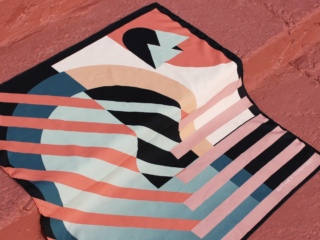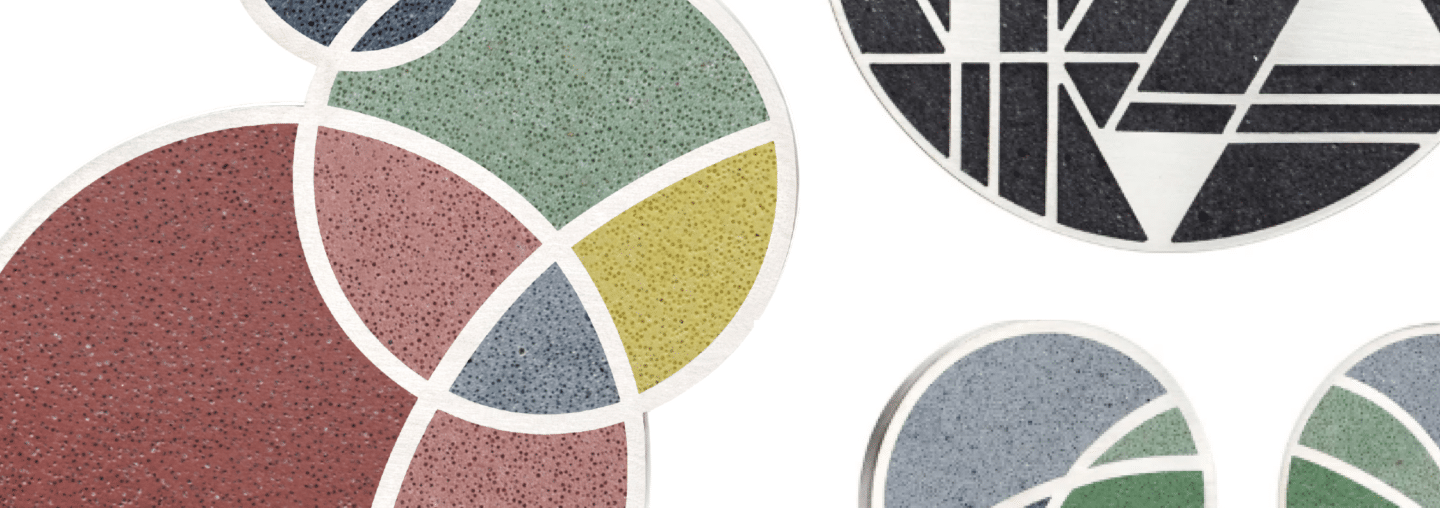
KONZUK x FLW: Architecture Inspired Jewelry
Frank Lloyd Wright Foundation | Mar 11, 2020
The Frank Lloyd Wright Foundation has recently collaborated with KONZUK, a brand that creates unique architecture-inspired jewelry out of stainless steel and concrete. We spoke with Karen Konzuk of KONZUK to learn more about her process and the creation of the new Frank Lloyd Wright-inspired collection.
Tell us a little about yourself
With a BFA and a major in jewelry design and a minor in art history, I built an independent jewelry design business that I continue to own and operate now for over 22 years. Although my formal education focused heavily on working with traditional precious metals, I have always shied away from mainstream expectations. My early influences were Bauhaus design and contemporary architecture. Shortly after completing my studies I began to experiment with stainless steel and concrete. While the unorthodox materials inspired me, its use required that I retrain myself since standard jewelry making rarely calls for these industrial materials. The properties of these mediums call for an understanding of unusual tools and manufacturing methods.
For over two decades I have maintained my intent on refining my aesthetic and elevating the application and perception of concrete and stainless steel within contemporary jewelry design. My vision for KONZUK is simple. I believe that good design enriches the lives of those it touches. It inspires people to greatness and brings out their own finer qualities. It is this belief that powers my design and informs every aspect of the company I have given my family name to. What matters to me is creating objects of personal value, that speak to a moment in time and place, and are beautifully built to last.
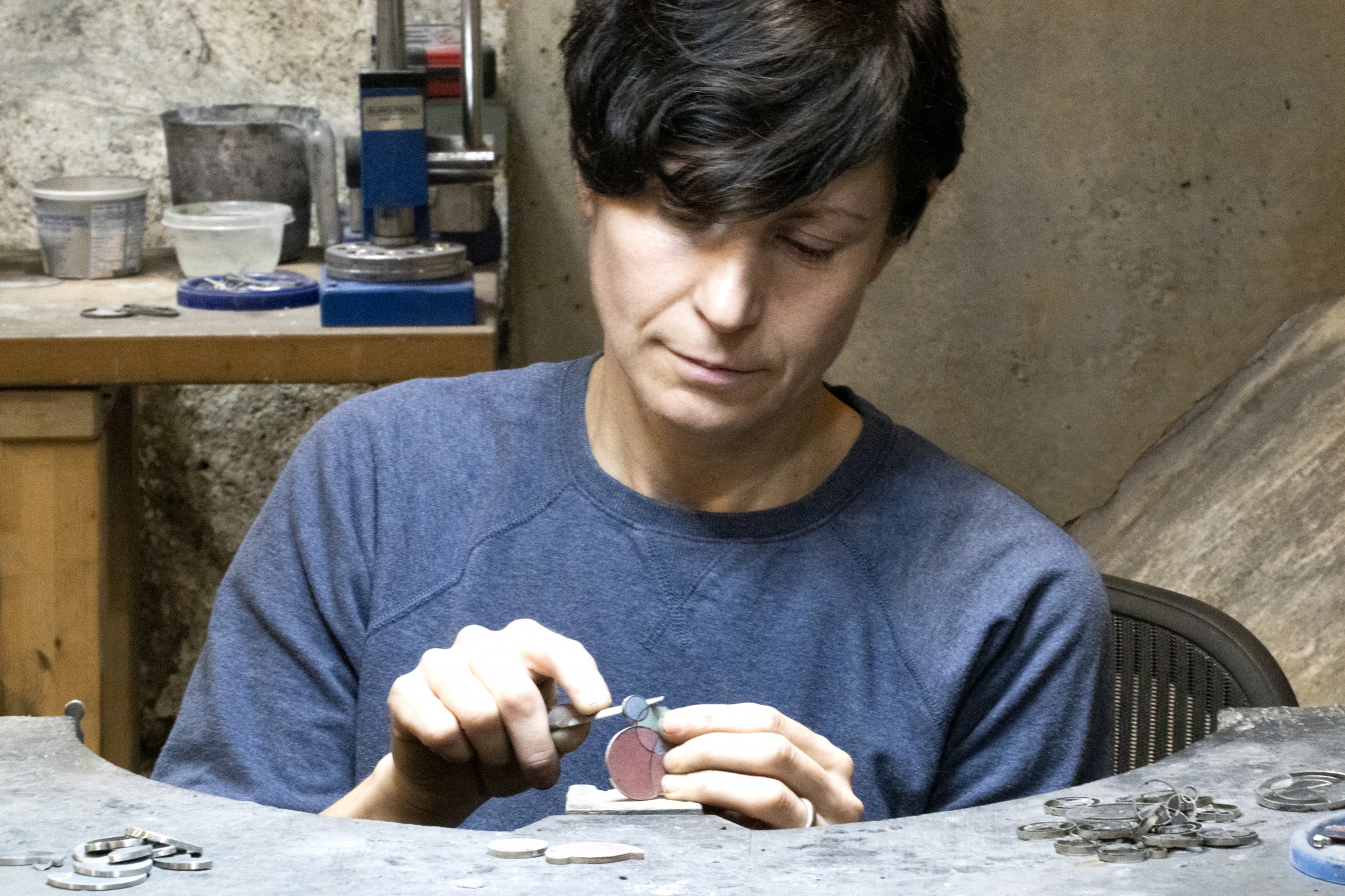
Karen Konzuk working on a jewelry piece from the Frank Lloyd Wright collection.
What inspired you to create this Frank Lloyd Wright-inspired collection?
I feel, like others must, that I grew up appreciating Frank Lloyd Wright’s works such as the Guggenheim and Fallingwater. I still remember standing in the middle of the MoMA’s 2017 exhibition, “Frank Lloyd Wright at 150: Unpacking the Archive” thinking to myself that I needed to create a collection based on Wright’s prolific work and style. I was mesmerized by his use of basic geometry to create immersive algorithmic designs where details seamlessly translated from two-to-three dimensions.
It is also amusing to me that having always fixated on the form of Wright’s architecture it never dawned on me that we shared an inherent appreciation of concrete’s ability to produce discriminating form and dependable function. That is what is why more recently I have started to invest time in his 1923 Textile Block buildings, such as the Ennis House. I plan on exploring a jewelry series with these as the focal point.

What designs of Wright inspired you most when creating this collection and how is that translated into the jewelry?
Seeing for the first time, and loving the overlapping circles of the March Balloons drawing at the MoMA exhibition resonated and was stamped into my mind. It was the primary design I thought of when asked by the Foundation to create this collection.
Although inspired by the details in Wright’s architectural work, specific influences were drawn from Wright’s unpublished 1927, Liberty Magazine covers. Specifically, Saguaro Forms and Cactus Flowers, and March Balloons. And the drawings for the Imperial Hotel gates in Tokyo was also influential in a collection that would be titled the Frank Lloyd Wright–Motif Series. Each design in the Motif Seris intentionally avoids simply creating a duplicate of Wright’s works.
But rather they interpret parts that contribute to defining the whole of each of the specific works. This is important to me because I hope this will, in turn, inspire others to look closer and appreciate the thoughtful detail in each of Frank Lloyd Wright’s works.
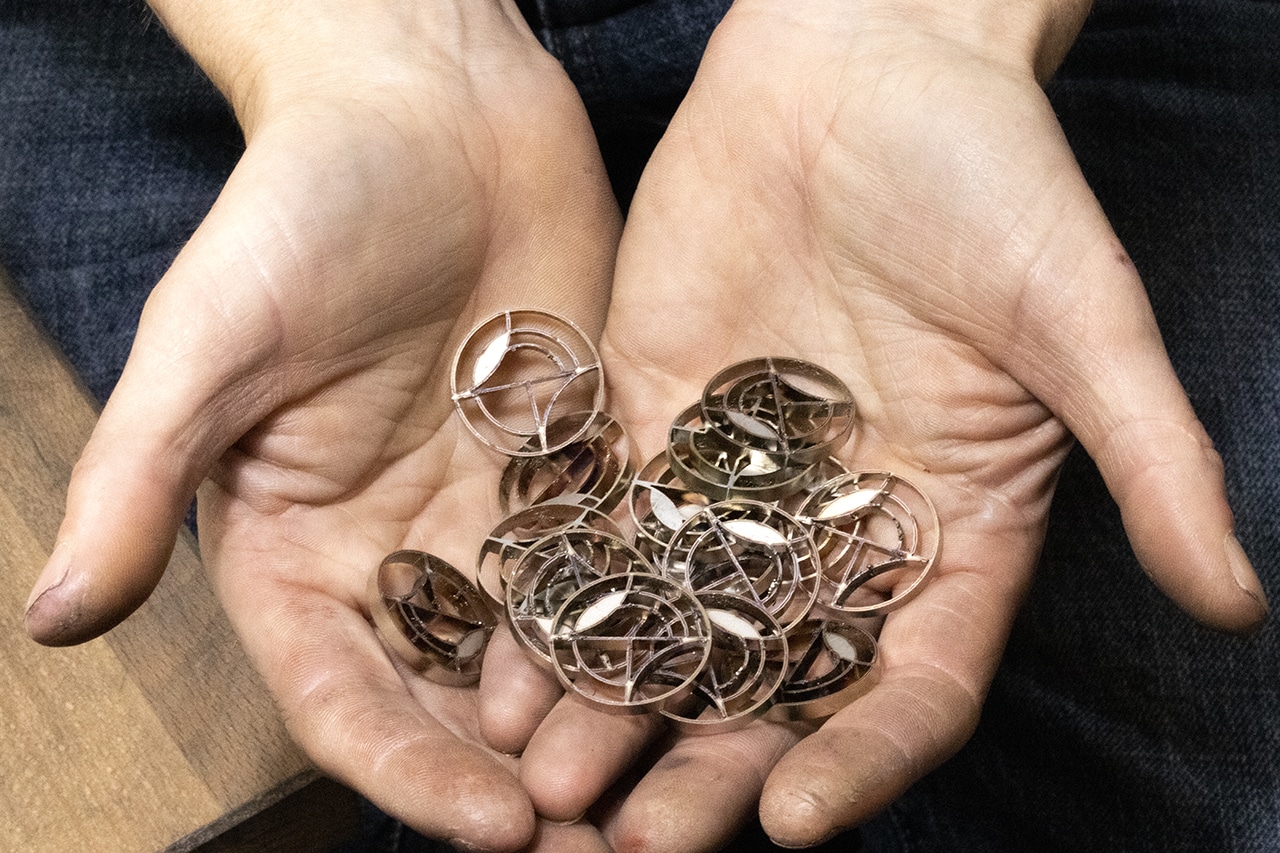
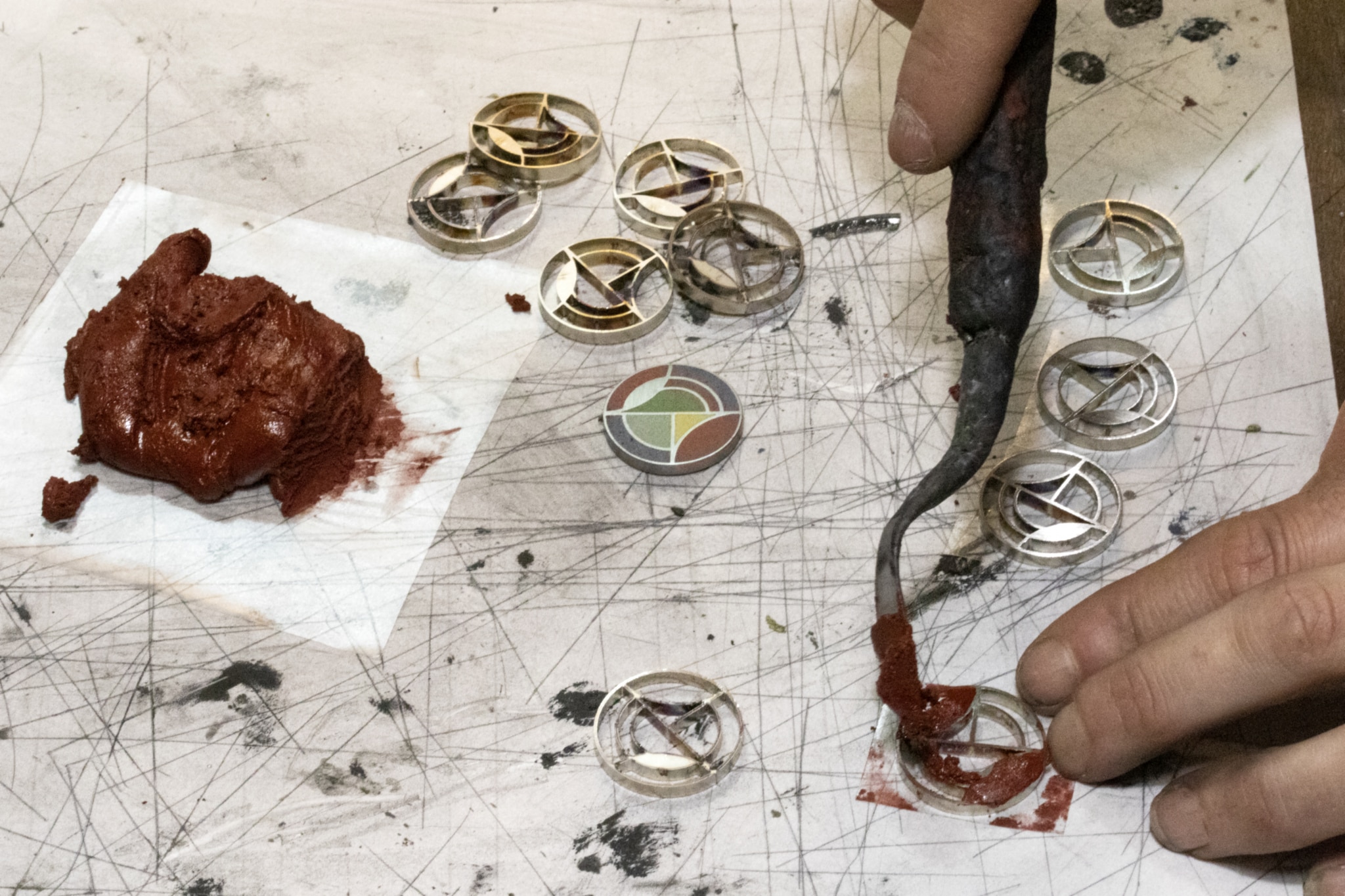

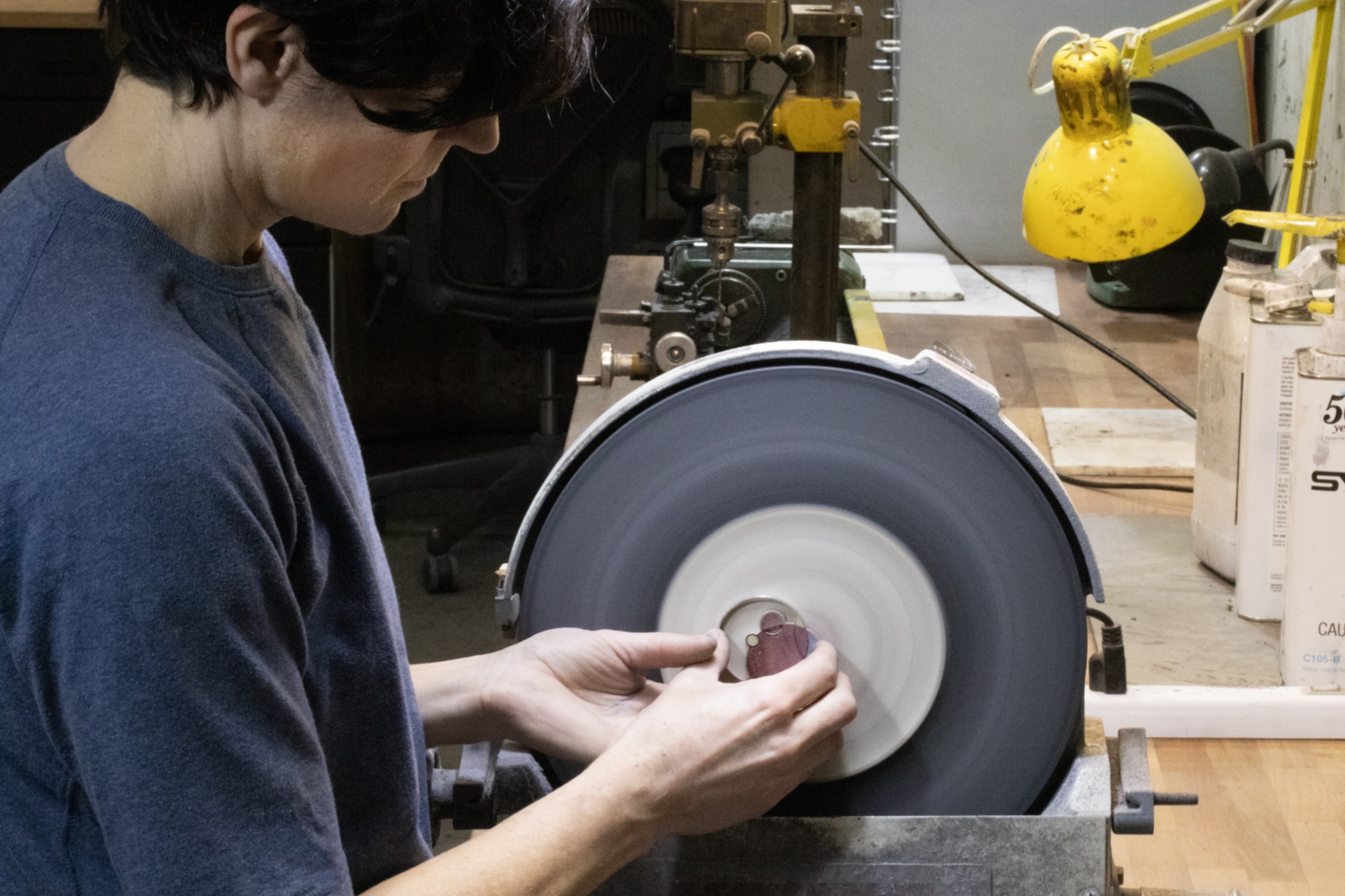
What did the process for creating this jewelry from start to finish look like, and what was your favorite part in the process?
A visit to Taliesin West included a fortunate opportunity to see many artifacts within the archives. I worked with the Foundation to obtain many archival linear and photographic references. A deep dive into select works followed. I attempted to define and deconstruct forms that would contribute to unique jewelry forms while still maintaining KONZUK’s minimalist signature on each design.
I drew linear patterns with Adobe Illustrator and drafted three-dimensional renderings in Rhino3D. These were then sent to a laser cutter to cut the framework from eight gauge stainless steel. Each laser-cut piece needs to be filed of stainless steel burrs, the inconsistencies repaired, and brush finished before the concrete can be applied.
The process of physically finishing each piece required out-of-the-box thinking to develop efficiencies in production. For example, I discovered that household cabinet liners are great for holding the stainless steel frames while concrete is applied.

A colorway was thoughtfully considered for each of the pattern designs. The colors Cypress Green, Indigo Blue, Flax Yellow—and a unique version of his signature Cherokee Red named Taliesin Red—pay tribute to Frank Lloyd Wright’s style of organic architecture while staying conscious of needing to be an appropriate fit for fashion. I can’t share the concrete mix we use but over 20 years of development, and application within my other collections, attest to its durability. The wet slurry of tinted concrete is painstakingly applied by hand with a painters palette knife into each of the patterned voids. The difficulty of producing and delivering this collection is that each color takes a whole day to set. Consequently, pieces with five colors require five days to complete from start to finish. Once the concrete sets excess material is sanded off to a flat finish. Appropriate jewelry hardware is applied and each piece is cleaned and inspected for approved completion.

Tell us a little about your connection to Wright and his work.
Throughout the process of developing this collection I learned that my appreciation of Wright’s Fallingwater, or Guggenheim and even the Prairie Style hold a common denominator, the principle of organic architecture. Organic in the sense of reinterpreting nature’s principles rather than imitating it. It involves respect for the properties of the materials and a respect for the harmonious relationship between the form and the function. And just like how Wright’s works harmoniously connect people to others and nature.
My designs, and the use of materials in those designs, are intended to connect people to the strength of self and their surroundings while having a selfless appreciation of others. I maintain that jewelry design, like architecture, provides a means for the end-user to make a statement. To declare independence from the expected.
I believe people who purchase my work appreciate the refinement of design and considered craftspersonship in each piece. They also recognize that the collection is the result of extensive investment into the interpretation of Wright’s designs rather than an artless duplication.
From the inception of KONZUK, it was my goal to make my collections both cost and conceptually accessible to those looking for a wearable piece of architecture. Since the launch of the Motif Series I am truly overwhelmed by the response. As a result, I am I have already started work on the next series which is influenced by the more three-dimensional architectural details in Wright’s work.
The full collection of KONZUK x FLW jewelry is available online. Select pieces are also available in the Frank Lloyd Wright Store at Taliesin West. Call the Store at 480.627.5398 to place an order.

